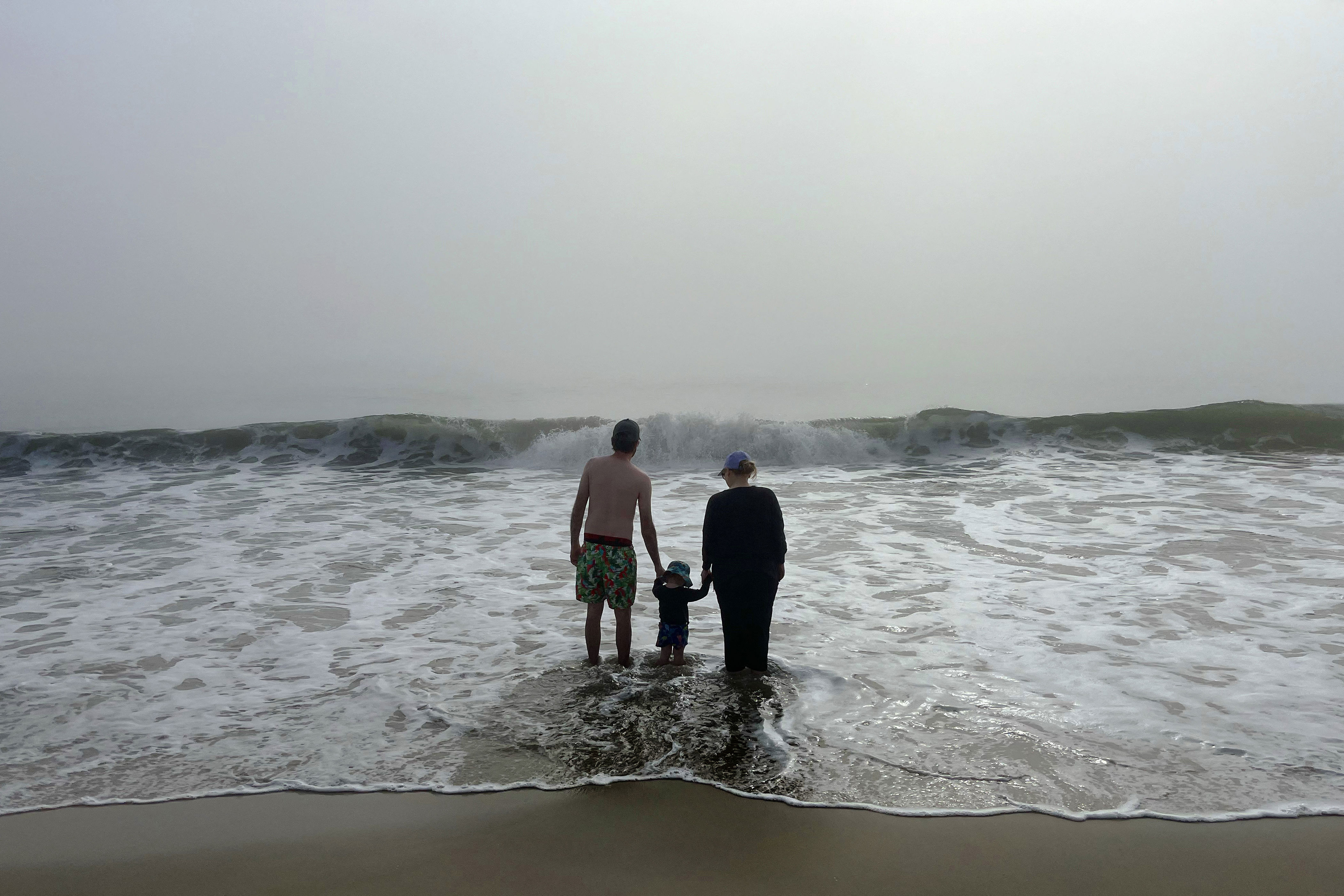Atlantic hurricane activity is usually nearing its peak at this time of year, and it seemed as if this August would be no exception. Tropical waters are extraordinarily warm, and two hurricanes have already pounded U.S. shores.
So why — despite predictions that this year’s hurricane season would be historically active — are the tropics suddenly so quiet?
There is a combination of factors demonstrating how even the most confident long-term forecasts are subject to unpredictable short-term influences.
An unusual African monsoon season is not producing the sort of atmospheric seeds that typically go on to become hurricanes. Air high above the tropical Atlantic is so warm that it’s actually preventing storms from brewing. Cyclical global rainfall patterns are creating stormy patterns elsewhere.
Those conditions won’t last, meteorologists said, though it’s difficult to say when tropical cyclone activity will pick back up. But they stressed: The pause isn’t reason to discount the threat of dangerous storms in the months ahead.
“Even the busy seasons have these kinds of lulls in them,” said Matthew Rosencrans, the National Oceanic and Atmospheric Administration’s lead seasonal hurricane forecaster. “This is still the time to prepare, because there are storms coming.”
This season has already been more active compared with usual seasons, to be sure.
While the five named storms that have developed so far is about normal for this point in the year, there aren’t usually three Atlantic hurricanes until early September. Ernesto became the season’s third hurricane in mid-August.
A measure of seasonal tropical storm intensity, known as accumulated cyclone energy, is already at nearly half its annual average, largely thanks to Hurricane Beryl, which was the earliest Category 5 storm on record in the Atlantic basin.
Still, a stretch with nary a hint of tropical storm formation at this time of year is unusual.
One named storm is usually present in the Atlantic basin during the final days of August, according to NOAA data on storm activity from 1944 through 2020.
The current lull can be traced to where most Atlantic hurricanes are born: Africa. The atmospheric disturbances that go on to become Atlantic cyclones usually emanate from monsoon rainfall over western Africa during the Northern Hemisphere summer months.
This year’s monsoon season is unusually strong, which Rosencrans said translates to frequent tropical waves — systems that push toward the west off Africa and into a zone of the tropical Atlantic that is prime for cyclone development. For reasons meteorologists don’t yet understand, the monsoon and the tropical waves are occurring significantly farther north than usual this summer. There are even forecasts for a “unique rain event” in the Sahara desert over the coming days.
That means the seeds of what might otherwise become hurricanes are entering the Atlantic at the relatively cooler northern fringes of what is known as the main development region for tropical storms. There, they are also encountering a layer of dry and dusty air blowing westward from the Sahara.
In those conditions, the tropical waves “just kind of fizzle out,” Rosencrans said. He said more research is needed to determine whether the African monsoon can become so strong that its ability to promote Atlantic storms can perhaps wane.
There was also a patch of cooler-than-normal waters to the south of the main development region, across the equator, that meteorologists were eyeing this month as a developing “Atlantic Niña,” lesser known and less significant than La Niña, the global climate pattern that is the counterpart to El Niño. It might have had a small impact on Atlantic storm activity, but the water has since warmed back up, said Franz Philip Tuchen, a postdoctoral researcher at NOAA’s Cooperative Institute for Marine and Atmospheric Studies.
Meanwhile, unusual warmth in the upper atmosphere over the Atlantic is also not conducive to storm development. For thunderstorm activity, it’s best to have warmth closer to the surface with colder air aloft, creating a clash when that warm air rises. But a layer of warmth overhead is acting like a cap on potential storms, meteorologists said.
At the same time, a larger global weather pattern just so happens to be in a phase that is discouraging storm activity in the Atlantic. The pattern, known as the Madden-Julian Oscillation, it sends clouds, rainfall and winds through the tropics, traversing the planet every 30 to 60 days on average.
That stormy influence has remained absent from the Atlantic basin for weeks and is something meteorologists don’t have the ability to account for when developing long-term forecasts, like for hurricane season, said Ben Kirtman, a professor of atmospheric sciences at the University of Miami.
“When are we going to have these quiescent periods, and when are we going to have these active periods?” It’s hard to say, Kirtman said.
Key ingredients are in place for an active final few months of hurricane season, which officially ends Nov. 30.
La Niña, known to encourage busy Atlantic hurricane seasons, is forecast to arrive before then, and there are signs it is developing quickly. And record or near-record temperatures are persisting in surface waters across the tropical Atlantic, meaning large stores of fuel for storms will be present for months to come.
“We are due for at least one or two more bursts of activity, easily,” Rosencrans said. “This lull is not that the season is done.”
But when it ends and why it’s persisting aren’t clear.
“It’s a bit mysterious at the moment,” Tuchen said.
The Madden-Julian Oscillation’s dampening influence on storm activity could wane in the coming weeks, though that is far from a guarantee, with weather models diverging on their projections. For now, weather models hint that the Atlantic will begin to slowly awaken in one to two weeks.
September is, historically, the peak month for Atlantic hurricane activity. Throughout the month, and into early October, ocean waters are warmest and tropical waves are typically most numerous.
After that, meteorologists begin to more carefully eye the Caribbean and Gulf of Mexico for “homegrown” tropical threats — ones that are less dependent on broader conditions across the Atlantic and can materialize more sneakily. October can be as stormy as a typical August.
Matthew Cappucci contributed to this report.


